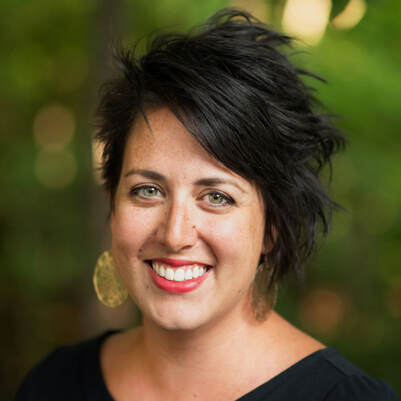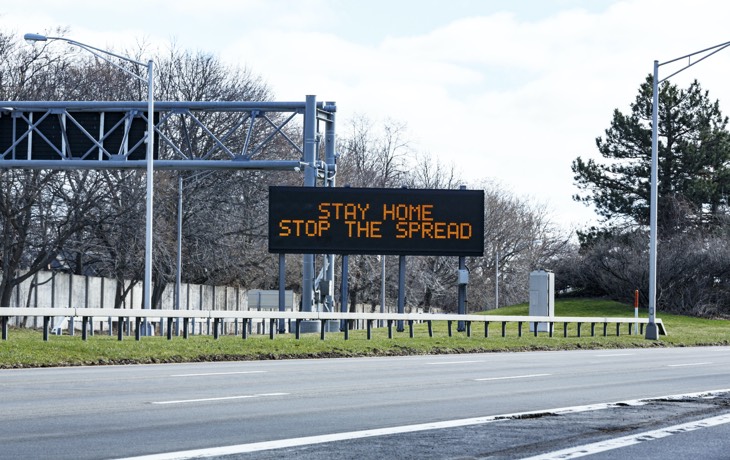So, your governor has said you can go out now, and restrictions are easing up. Good for you! …Or is it?
How will we know if lifting restrictions is a good decision or not, especially with such distrust in the official numbers and conflicting reports from various models on total cases and deaths? Which resources can we trust? Our economy and attention spans may be begging to reopen, but will doing so send us into another lockdown?
We’ve drawn on advice from doctors, professors, and scientists from around the country to help us prepare for the upcoming months. Here’s what we know:
- Doctors are encouraging phased reopenings. Those will involve close monitoring of hospital capacity, ICU beds occupied, positive tests, and deaths.
- You can ask specific questions where you are to determine how things are going.
- Testing is the key to monitoring success.
- Older populations should be “cocooned” and protected even as younger people start to re-emerge.
- N95 masks will be the secret to a successful reopening.
- Staying closed delays the inevitable increase in cases, but a slow opening buys more time for improvements in testing, data, and vaccine development.
Preparing for the end of lockdowns
“It’s unlikely this crisis will blow away before the end of September,” said Dr. Leo Nissola, an immunologist and health advisor on COVID-19 projects. Dr. Nissola recently wrote a column called, “Return to ‘normal’ a change in the wrong direction,” and his feelings reflect the column’s title.
Dr. Nissola said we should consider the following questions as we monitor how the end of lockdowns is progressing:
- Are new COVID-19 cases in your county decreasing?
- Is COVID-19 testing widely available?
- Can your city provide COVID-19 testing to those who are asymptomatic?
- Is your local hospital overloaded?
- Does your local hospital have the capacity to treat a surge of COVID-19?
- Does your local ICU have headroom to handle a new wave? (Pennsylvania, for example, is at 73 percent. That’s really high.)
“If the answers to those questions are no, then most likely loosening the restrictions is not the right measure,” said Dr. Nissola. “Montana, for example, is at a reduced risk of bad implications if it reopens because the infection growth rebate of active cases is decreasing and the positive test rate is low, meaning it is performing widespread testing.”
As for how to get answers to the above questions, it’s not enough to just scroll through your social media feed. To get a real sense of how things are going, you have to know which resources are trustworthy and which are just hearsay. You need quality information from trusted sources.
Dr. Nissola is an advisor for covidactnow.org, a user-friendly interactive map that charts progress based on three criteria. He said sites like this can help individuals figure out if their communities are on the right track. The site asks three crucial questions:
- Is COVID in retreat?
- Are we testing enough?
- Are our hospitals ready?
He also recommended using the database #TestAndTrace. Test and Trace is a resource that focuses on states’ ability to implement contact tracing. State and local governments should, according to the site, be “identifying people who have come into contact with an infected person (contact tracing), testing them, and then isolating them if they’re sick.” You can find out how well your state is doing and where it can improve.
Another resource, the COVID-19 projection model uses up to date information from the New York Times to track each state’s reopening timeline. The model can also predict death and infection rates. The CDC has also looked to this model as a resource.
Ending lockdown: best and worst-case scenarios
How bad could things really get if we suddenly lifted the lockdowns? It’s the question everyone has been asking as they reach however many weeks we are into quarantine.
Dr. Lauren Ancel Meyers, a professor in the Departments of Integrative Biology and Statistics and Data Science at the University of Texas at Austin has been at the forefront of modeling COVID-19 outbreaks and reporting them to the DCD and the White House. The IHME is a helpful projection model to consider, said Dr. Meyers, but it also assumes that the same thing that happened in China and Europe will happen here.
In Dr. Meyers’ opinion, the controversial IHME model predicts too far out. That makes it similar to a meteorologist trying to determine next week’s weather today. Instead, Dr. Meyers created an alternate model with her team at the University of Texas. That model corrects the IHME’s over-prediction of the future.
In a video interview, Dr. Meyers outlines the most conservative scenario and the most extreme scenario in to give us an idea of how concerned we should be as lockdowns are lifted.
Door 1: “Extreme shelter”
If we indefinitely shelter for 1.5 to 2 years and schools remain closed or semi-sheltered, we could see a “substantial economic and societal cost.” But we’d also reduce transmission by 90 percent. “In Austin, hospitalizations would be under 100 deaths total through the summer,” Dr. Meyers said.
Door 2: “Extreme return to normal”
If we return to “almost normal” starting now (or back on May 1), including reopening schools and finalizing the 38-day lockdown, we would only see a 40 percent reduction in transmission. That’s even with face masks and social distancing, Dr. Meyers said.
“There would be a huge wave of hospitalizations above capacity and it would stay that way for three months, with no hospital beds [available] and not enough doctors and nurses,” said Dr. Meyers. “There would be far more than 2,900 during the summer.”
Door 3: Dr. Meyers’ alternative option
Dr. Meyers said that while scenario 1 isn’t feasible, scenario 2 is “unacceptable; not worth the costs to exceed hospital capacity.” Instead, she recommended short-term lockdowns with daily monitoring of new admissions into hospitals. Authorities should also monitor how many people are in hospital care every day.
When there are 80 new admissions per day [in Austin] it [re]starts the lockdown and when it’s below 80 it stops the lockdown,” Dr. Meyers said.
If we choose this option, we’ll likely still see a third wave in November/December as we approach “herd immunity.” There would be 3,000 deaths in the next 18 months (not in just the summer, as she explained in the above-relaxed scenario).
Dr. Meyers’ final recommendations include “cocooning” the elderly and immunocompromised even as restrictions relax:
- “[Vulnerable individuals] still need to reduce interactions 95 percent. If reduced to just 80 percent cocooning, it would trigger closures earlier because many more hospitalization and many more deaths would happen,” Dr. Meyers said. She calls the 80 percent reduction “bleak.”
- Increased prevention of nursing home exposures
- Incentivizing staying at home from work if you are sick, especially high-risk workers
Finally, Dr. Meyers said waiting in lockdown prolongs the inevitable deaths. But it also “buys time to protect populations, provision our cities to ramp up testing and capacity to mitigate [the problem] when it does ramp up.”
A cheap and easy solution to protect yourself and the elderly
If you are still hesitant to leave your house as restrictions loosen, there’s a simple intervention that has an increasing amount of support from both science and the containment successes in some Asian countries: the face mask.
Dr. Eric Mizuno, an internist at Weiss Memorial Hospital in Chicago, IL, said we can “have it all” with the N95 mask. “I confidently walk into hospital rooms of 35 patients every day knowing this mask will protect me,” Dr. Mizuno said. “I walk into TB rooms with it. If everyone wore it then you go to your ball game, [you can] be within three inches, and [if] you don’t take your mask off [it will be fine]. You can’t breathe [the virus] in, and if you have it you can’t breathe it out.”
He says the inexpensive device could open the community immediately. (We recently discussed a cloth mask you can make at home that’s nearly as effective as an N95.)
Some citizens think requiring a mask is a breach of their rights. To that, Dr. Mizuno said, “Just stay at home…which is a great violation of civil liberties.” He explains that while we live in the land of freedom, and honors the military which fought hard for that, it’s a moral obligation to protect the elderly.
“It may hop jump and skip to your grandma, or another person’s grandma, and it may kill them. Who beats up on older people?”
He is especially frustrated with protestors endangering others. While he does respect their constitutional right to do so, he proposes they should have to wear masks.
“You may as well take a knife and go to a nursing home and take out about ten percent and start stabbing them….it may be better. They’d die more quickly. They are dying prolonged, miserable and alone.”
A safe reopening is not just about preventing COVID-19
If we actually do the reopening properly by taking the right precautions, the public health advantages of a safe exit from lockdown will be far more widespread than just a lower COVID-19 case count.
Lockdowns may have saved lives, but they also have some public health downsides, said Dr. Leann Poston. Dr. Poston is a pediatrician and medical contributor to Invigor Medical. She says that even though the lockdowns have saved lives by slowing the spread of SARS-COV-2, a more comprehensive view of them reveals their serious public health downsides.
Aside from the economic devastation, we need to consider the non-COVID health risks the lockdown was exacerbating. “For example, depression, suicide, alcoholism, anxiety, child abuse…the lockdown was to try to keep the number of COVID cases under what the medical system could handle, but it came at a great expense,” Dr. Poston said.
Because we did lockdowns, though, we now have enough data that we won’t be surprised by exponential increases in disease. Dr. Poston also said we now have a better handle on interventions and other factors that lead to shorter hospitalizations and better epidemiological control.
So, basically, we will know easing restrictions is “working” not just from how many COVID cases we have, but from how easily it is for otherwise healthy people to get access to care for other diseases and issues.
Poston is also concerned about the fall, when COVID care may be complicated by increasing influenza cases.
But if we can pull it off, then a slow reopening, proper protection, and considering trusted resources will help us track progress, and hopefully avoid more deaths and recurring lockdowns.

